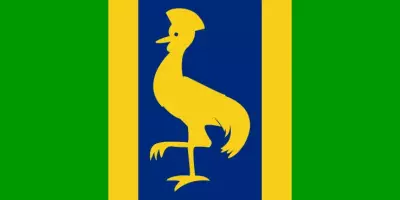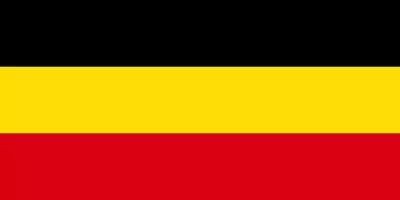In 1888, the British Imperial East Africa Company (IBEAC) was granted a royal charter to manage and protect British commercial interests in East Africa, including the future Uganda. The company consolidated its control in 1891 by signing a treaty with the powerful Kingdom of Buganda. However, due to religious wars and financial difficulties, IBEAC lost its position, ceding its administrative rights to the British government in 1893.
Although IBEAC played a crucial role in establishing the British presence, research materials do not provide a detailed description of the company's specific flag or its symbolism, other than to mention that “colonial flags and flags that displayed the IBEAC badge were changed to reflect the new Kenya badge.”
In 1894, the Kingdom of Buganda was officially declared a British Protectorate, encompassing the lands that make up modern-day Uganda. This marked the transition from commercial administration to direct British government control. The Buganda Agreement of 1900 was fundamental, recognizing the Kabaka (King) of Buganda as the ruler of the kingdom, subject to his loyalty to the British monarch, and granting statutory recognition to the Lukiko (Council of Chiefs), while integrating Buganda as a province into the wider administrative and fiscal system of the protectorate. The British administration gradually extended its control to other kingdoms, such as Bunyoro, Toro, and Ankole, by 1896, through the signing of treaties, although the northern and eastern areas without a centralized authority were administered directly. Until 1914, the Union Jack, the national flag of the United Kingdom, was the only official flag used to represent British authority in the Uganda Protectorate.

In 1914, a distinctive flag was officially adopted for the Uganda Protectorate, replacing the exclusive use of the Union Jack. This flag was the British Blue Ensign, a common design for British colonies and territories. It had the Union Jack in the canton (upper left part near the pole) and the badge on the cloth (the outer part of the flag). The badge placed on the flag was a gray crowned crane. This flag was used until March 1962, shortly before Uganda gained independence.
The gray crowned crane, a large bird native to Uganda and surrounding areas, was chosen as the official symbol of the territory. Its choice was intentional: The British Empire chose this new, neutral symbol to avoid any hint of favoritism toward one of the many powerful traditional kingdoms (such as Buganda, which had its own flag) that made up the new colony. This pragmatic choice was intended to maintain stability and prevent ethnic rivalries that would have complicated colonial administration.
The crane was famous for its gentle disposition, and its gracefulness was of particular interest to British officials. Sir Frederick Jackson, an ornithologist and governor of the Uganda Protectorate, successfully lobbied King George V to make the crowned crane the official symbol of the territory. In addition, the gray crowned crane had a historical connection, serving as a military badge for Ugandan soldiers during British rule. To this day, the crowned crane remains the official symbol of Uganda and is revered by its people.
As Uganda moved toward independence, there was an urgent need for a national flag that would represent the country's diverse peoples and cultures. After the elections on March 1, 1961, the Democratic Party (DP), led by Benedict Kiwanuka, formed the government and became the first political party to govern the country domestically. This government initiated the process of designing national insignia, including the flag.
The National Flag Committee, chaired by Sentiza Kajubi, initially proposed a flag with green, blue, and gold colors unanimously agreed upon to reflect aspects of the country rather than political parties. For example, the Teso District Council's General Purpose Committee proposed blue to represent Uganda's abundance of water and green for its vegetation, with a crowned crane standing on a mountain in the center as a symbol of continuity.

The specific proposed design of the Democratic Party flag featured vertical stripes of green-blue-green separated by narrower yellow stripes, with the silhouette of a yellow crane in the center. This design was used from March 1962 to October 1962, although its official status is debated. However, this design was ultimately considered by some to be “unpopular” and “not very ‘African’”. In addition, the color green was associated with the Democratic Party, which made other political factions uncomfortable.
Everything changed dramatically after the national elections on April 25, 1962, when the Democratic Party lost power to the Uganda People's Congress (UPC). Milton Obote, the leader of the UPC, became prime minister and led Uganda to official independence on October 9, 1962.
The newly elected UPC government rejected the flag design proposed by the DP. Instead, they proposed the current design, which was directly based on the UPC's own party flag, a tricolor with horizontal stripes of black, yellow, and red.

The flag was designed by Grace Ibingira, who served as Uganda's Minister of Justice. Although C. Todd, a professor of fine arts at Makerere University, is mentioned as the designer of the Ugandan coat of arms and other ceremonial items registered with the Board of Arms in London, the main credit for the design of the flag is consistently attributed to Grace Ibingira.






